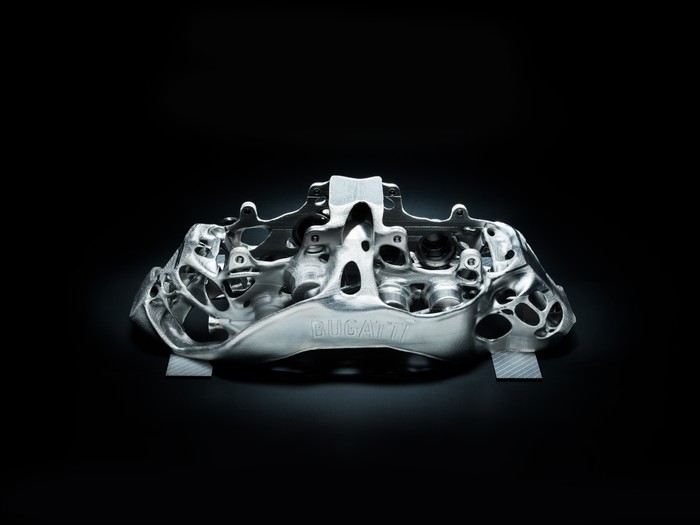

Bugatti builds massive 3D-printed titanium brake caliper
The eight-piston monobloc caliper is claimed to be the largest functional titanium component produced via additive manufacturing.
Bugatti has revealed a massive 3D-printed brake caliper, claimed to be the largest functional titanium component produced via additive manufacturing.
The Chiron's brakes are said to be the largest of any production vehicle, with eight-piston calipers up front and six-piston units in the rear. The current production brakes are forged from a block of aluminum, using bionic design principles to keep weight below five kilograms each.
The 3D-printed titanium prototype calipers also appear to utilize bionic design elements that are particularly challenging to manufacture using traditional methods. The highly optimized design and titanium-aluminum-vanadium alloy are said to achieve a tensile strength of 1,250 newtons per square millimeter, much higher than the Chiron's aluminum calipers despite dropping overall weight to just 2.9 kilograms.
Hamburg-based manufacturing partner Laser Zentrum Nord handled the actual printing, creating the caliper using four 400-watt lasers to help fuse layers of titanium alloy powder. The final part is then sintered at temperatures up to 700°C before a supporting structure is removed and the component is ready for surface treatment.The caliper still requires traditional machining on a five-axis mill to complete contours of the functional surfaces, such as the piston contact chamber, requiring an additional 11 hours of work.
"The result is a delicately shaped component with wall thicknesses between a minimum of only one millimetre and a maximum of four millimetres," the company says.
3D printing has slowly expanded into new industries beyond aerospace. Machine builders are still working to overcome challenges related to production speed and cost, however, to make the technology more competitive.